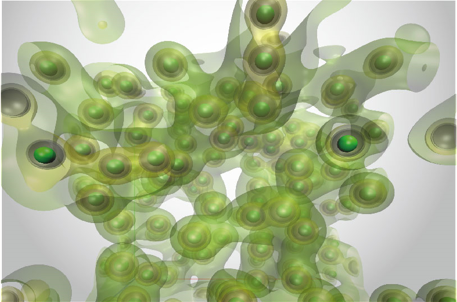With the dawn of new high-power laser and accelerator facilities, modern physics was able to reach extreme states of matter normally found only in the universe or deep inside the core of our planet. One of those extreme regimes is referred to as warm dense matter (WDM), which in fact is a type of state reaching moderately high temperatures ranging from 0.1 to 100 eV, and solid densities, which mostly corresponds to strongly coupled plasmas with fully or partially degenerate electron species. This is also a primary reason why WDM is poorly understood by theory.
Often, WDM exists at high pressures reaching above 1 M bar both in a laboratory as well as in astrophysical objects. WDM is common in astrophysical bodies such as brown dwarfs, crusts of old stars, white dwarf stars and high-pressure phenomena such as supernova explosions, collisions of celestial bodies and astrophysical jets. The study of structure, thermodynamic state, equation of state (EOS) and transport properties of WDM has become one of the key aspects of laboratory astrophysicsh as well as inertial confinement fusion (ICF), where the imploding capsule goes through the WDM regime on its way to ignition.
A review article published in High Power Laser Science and Engineering, Volume 6, Issue 4, 2018(Katerina Falk, Experimental methods for warm dense matter research) introduced some of the key research topics including phase separation of species within planetary mantles and phase transitions in elements under extreme pressures inside planetary cores or during asteroid impacts with examples of the most exciting recent experimental results.
The review article makes brief overview of major theoretical efforts to study the structure of WDM. A comprehensive introduction to the experimental methods in WDM research, including various types of generation of these states at different laboratory facilities as well as the diagnostic methods used, was provided. The primarily emphasized the novel methods to reach highly compressed states using high power lasers and free electron X-ray lasers that have generated a rapid development in this field over the past two decades, and also discussed for completeness.
Especially, the development of short-pulse optical and X-ray laser pulses meant a true revolution for laboratory astrophysics. Many new diagnostic methods based on these light sources have recently been developed to study WDM in its full complexity. Ultrafast nonequilibrium dynamics has been accessed for the first time thanks to sub-picosecond laser pulses achieved at new facilities.
Recent years saw a number of major discoveries with direct implications to astrophysics such as the formation of diamond at pressures relevant to interiors of frozen giant planets, metallic hydrogen under conditions such as those found inside Jupiter’s dynamo or formation of lonsdaleite crystals under extreme pressures during asteroid impacts. This article is the first and yet still relatively brief and approachable review that tackles all of the experimental techniques developed for experimental study of WDM and should serve as a good introduction to the field for students or experienced researchers interested to broaden their scope.

A snapshot of a DFT-MD simulation of isochoricaly heated warm dense beryllium at a temperature of 12 eV. Shown are the position of the nuclei (green spheres) and several isosurfaces of the electronic density ranging from core electrons to valence electrons.


